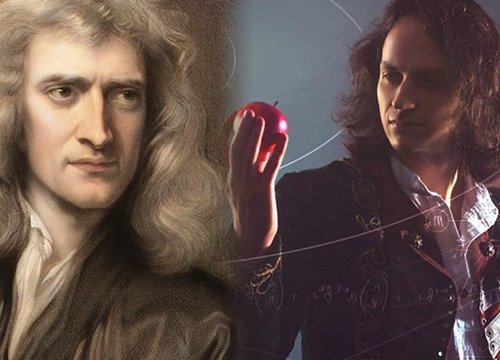Jim Twins - Twins separated at a young age but their lives are strangely coincidental

4 | 0 Discuss | Share
Up to now, a series of mysteries about humans and the universe have not been solved. However, through the lens of science, humans have explained the reason why the sky is blue and the universe is black.
Looking up at the night sky with our own eyes or admiring images sent from space, we will see a dark, deep space, dotted by bright stars.
Our sun is a giant star. The amount of light it emits is enormous. The universe is full of stars that shine like the Sun, so many that it's almost impossible to count them all. With so many stars, space should be lit up, right? Exactly!
But why is it black? Why isn't space as colorful or blue as the sky on Earth?
Many would answer because the universe is dark, not illuminated by the Sun. But in reality, the color of the universe has little to do with the lack of light.
The universe is always black even though there is the Sun and thousands of shining stars. This is due to the law of light. That is, we can only see an object when the light from that object reaches our eyes and the image we see is correlated with the size of that object. The stars, no matter how many and bright, are far apart in the vast universe, so we see that the universe is black and speckled with light.
This law of light applies to the colors of the stars that we see. When we look up at the night sky, we can see stars with different colors such as yellow, orange, red, white,... but no green stars. This is because the human eye can only see light with wavelengths from blue to red, and green is in this range.
But green stars emit light of different wavelengths, the human eye when receiving them mixes those colors to see, just like the Sun emits a lot of green light but I only see a bright white. That's why there are many green stars in the universe but we can't see them.
"You would think there are billions of stars in our galaxy. They reflect light, and are as bright as when we look up at the night sky," said Tenley Hutchinson-Smith, a graduate student in astronomy. and astrophysicists at the University of California, Santa Cruz (UCSC). "But it's really dark."
This contradiction, says Hutchinson-Smith, has been called Olbers' paradox by physicists and astronomers.
In it, the phenomenon is explained by the theory of space-time expansion, that "our universe is expanding faster than the speed of light".
When no visible light is detected, we will see space in the dark. Moreover, light has a certain speed limit, while the universe is extremely large. So light from distant stars can't even reach our eyes. Therefore, space is dark.
It is conceivable that light emitted from the sun, or from expanding galaxies, turns into infrared, microwave, and radio waves that cannot be seen by the human eye. This is the reason that space in the universe is dark when viewed with the naked eye.
Miranda Apfel, also a graduate student in astronomy and astrophysics at UCSC, thinks that if humans can somehow see ultraviolet or infrared rays, then space must be will be filled with light.
The explanation for this is that the protons and electrons that existed since the very beginning of the universe were scattered by the "Big Bang" (Scientific name: Bigbang) which is still filling all space.
Another reason interstellar and interplanetary space seems so dark is because they are a near-perfect vacuum.
If you don't know, Earth's sky is blue because the molecules that make up the atmosphere (mainly nitrogen and oxygen) scatter a lot of the blue and purple wavelengths of visible light. from the Sun in all directions.
However, in the absence of matter, light would travel in a true straight line from where it was emitted.
Because space is a near-perfect vacuum - that is, it has extremely few molecules of matter, there are virtually no "catalysts" to scatter light to our eyes. At that time, we will only see a single black color.
At dusk, the thicker air mass scatters both red and orange light, so the sky is often red at dusk. Specifically, when the Sun begins to set, light needs to travel a longer distance through the sky. gas before reaching the position you see. At this point, more light will be reflected and scattered. The less direct light from the sun reaching your location, the less luminous the sun will be visible to you. Also during this time, the color of the Sun begins to change, from yellow during the day to orange and then to red.
This hypothesis is supported by a study in early 2021 in the Astrophysical Journal, which suggested that space may not be as dark as we think.
Through NASA's New Horizons mission to Pluto and the Kuiper Belt, researchers have been able to see outer space without the interference of light from Earth or the Sun.
What does the air smell like?
Space in space contains many by-products of combustion, which are compounds belonging to the group of polycianic aromatic hydrocarbons (PAH).
PAH compounds seem to be ubiquitous in the universe and have a distinctive taste. These compounds are also on the list of substances, said Louis Allamandola, director of the Institute of Astrophysics and Astrochemistry. appeared earliest on Earth, so it's no surprise that PAHs are found in coal, oil, and even food.
The taste in the air is very different from the earth. NASA enlisted the help of Steven Pearce, a perfumer that simulates the smell of space, to train astronauts. Pearce said the smell in the air resembled the smell of gunpowder.
Allamandola explains that the smell in our Solar System is especially spicy because it contains a lot of carbon and little oxygen, and that "just like a car operating in a state of hypoxia, it will appear black soot. Stars contain a lot of oxygen, however, it tastes like the smell of a charcoal grill.
Once you leave our galaxy, you may encounter interesting smells. In the black pocket of the universe, molecular clouds contain tiny dust particles with a foul odor, punctuated by a sweet taste accompanied by a rotten-egg odor of sulfur."
Why is the rising sun distorted?
Development science helps us to know that, the Sun is spherical and is the center of the galaxy. But if you have ever watched the sunrise or sunset, you will wonder: The sun is distorted, not spherical.
Like a long spoon dipped in a glass of water that feels broken to the eye, refraction of light is the answer we seek. Light normally travels in a straight line, but when it moves from one medium to another, it "bends".
Our atmosphere is actually not uniform, that is, there are differences between regions, depending on altitude, climate... It is often said that dawn and dusk are two times of the Sun. the sky closest to the horizon. That is also the position where this refraction of light can be most clearly felt.
The air near the ground is heavier than the air above. Therefore, when the Sun rises or slowly sets, we will have the feeling that this "star" is distorted and bent.
It can be affirmed that seemingly obvious phenomena contain many mysteries. Today, people are still researching day and night to try to explain more surrounding phenomena that have not been answered before.
Habits that seem right but turn out to be wrong  team youtube09:14:44 14/04/2021There are so many daily habits that you yourself repeat month after month, year after year, you still think it's right to do so because they are so common. However, if you look at the images below, you will be surprised because these actions yourself also accidentally made...
team youtube09:14:44 14/04/2021There are so many daily habits that you yourself repeat month after month, year after year, you still think it's right to do so because they are so common. However, if you look at the images below, you will be surprised because these actions yourself also accidentally made...

4 | 0 Discuss | Share

1 | 0 Discuss | Share

3 | 0 Discuss | Share

1 | 0 Discuss | Share

2 | 0 Discuss | Share

4 | 0 Discuss | Share

2 | 0 Discuss | Share

2 | 0 Discuss | Share

3 | 0 Discuss | Share

2 | 0 Discuss | Share

4 | 0 Discuss | Share

2 | 0 Discuss | Share










4 | 0 Discuss | Report